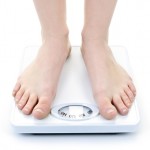 Downsizing in 2017
Downsizing in 2017
Thanksgiving, Christmas, and New Year’s Eve—the theme of these gatherings spent with friends and family can be summed up with the popular phrase: “Go big or go home!” However, if we are honest, what occurred over the holidays is that we “Got big; then went home!”
I believe that scaling back in the food intake department should be approached in the same way you would handle an intentional financial downsizing. For example, if you were looking to reduce your spending in 2017, you would begin by examining your last year’s purchasing habits and securing up-to-date information regarding your current bank/debt balances. Given that information, you could intelligently decide upon a “slimming” budget plan, and adjust your future spending accordingly. Likewise, without serious reflection on your past eating habits and knowledge of your current weight and BMI (body mass index), you will be hard-pressed to make a significant, long-lasting impact on your health.
What I am NOT proposing is a New Year’s resolution! Rather I am proposing a New Life Revolution. Changes must be made that you can continue to “live with” as long as you are living. Forget skipping breakfast or putting yourself on some fad diet. Weight lost this way will always be regained.
In my book, Overcoming Overeating, I have readers first analyze WHY they overeat. This self-examination is the key to permanent weight loss. When food is habitually used for reasons beyond its fueling role, you will find yourself continually fighting the “Battle of the Bulge”. You may want to pick up an electronic or hard copy of that book as you set your sights on a healthier 2017.
Next I recommend that you step on a scale and then visit my website’s Free Resource “BMI Calculator” to determine your BMI, and how much you should weigh to land in the range of a healthy BMI*. Once you know exactly how many pounds need to be shed, you can rightly set your aim. The first goal I suggest is to lose 10 % of your current body weight, achieved at a rate of 1-2 lbs/week. Do this by eating well-balanced, nutritional foods while cutting out sugar, white flour/rice, and high caloric juice and sodas.
Come on y’all, let’s finally get lean—it’s 2017!
*The BMI measurement is not accurate for the elderly or athletically-built populations. For these I would look to the Waist-Hip Ratio measurement, which basically shows that health risks are present when one’s waist equals or exceeds the circumference of one’s hips (pelvis).